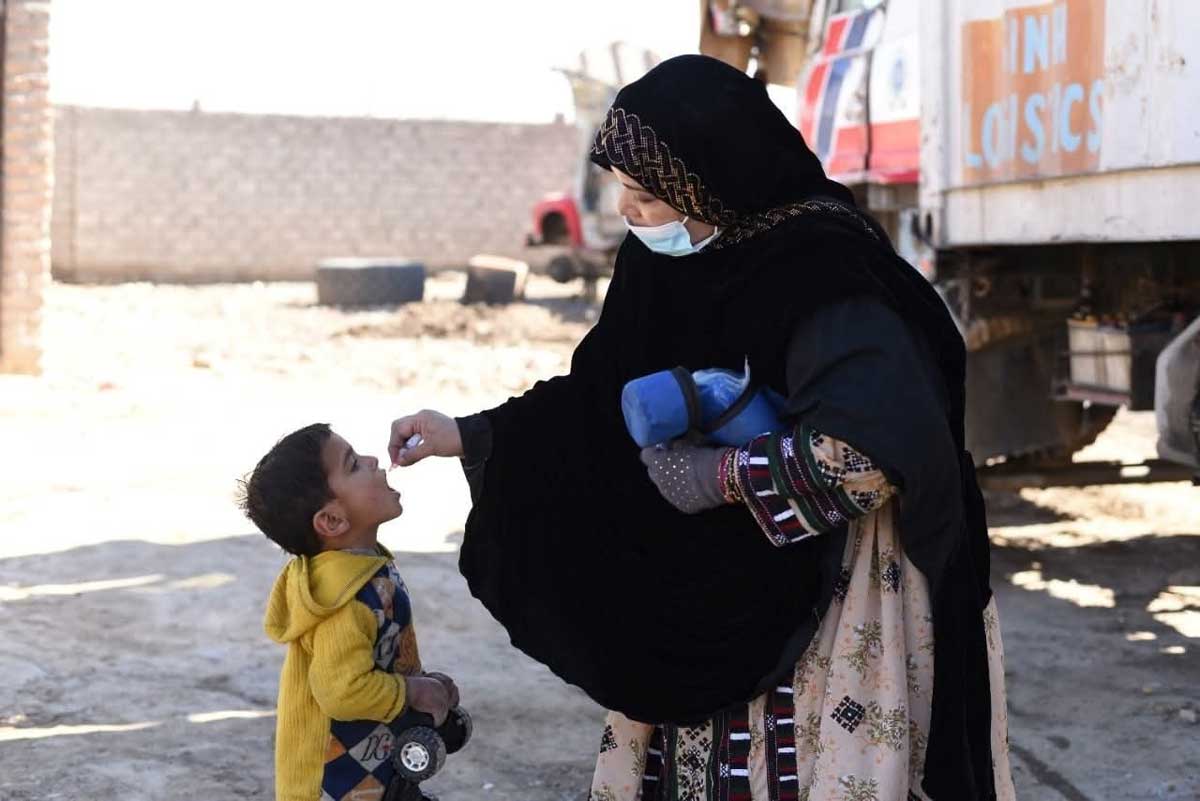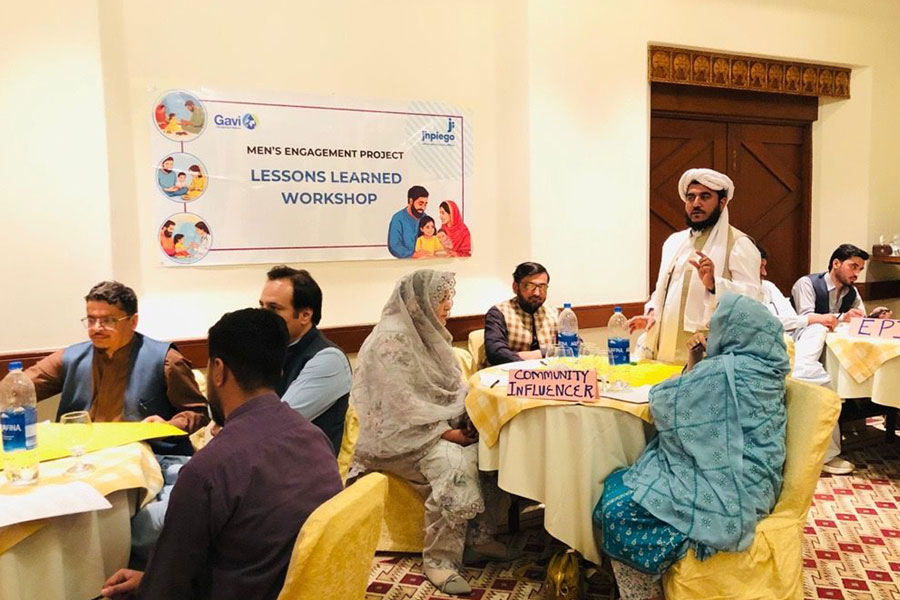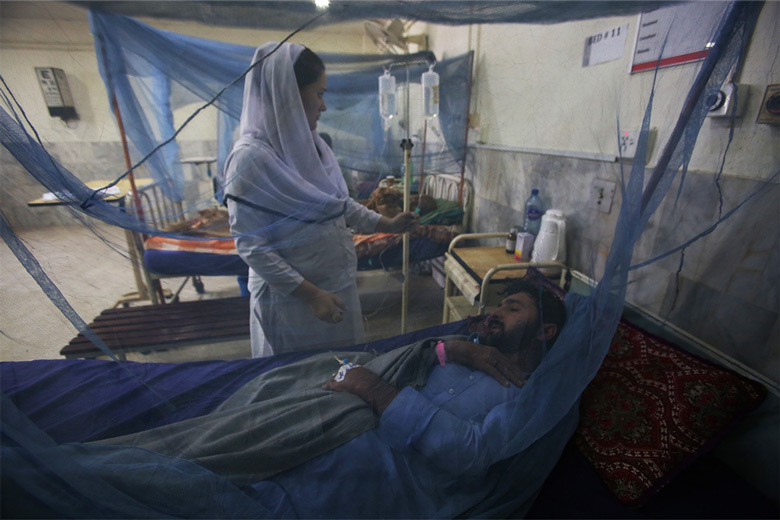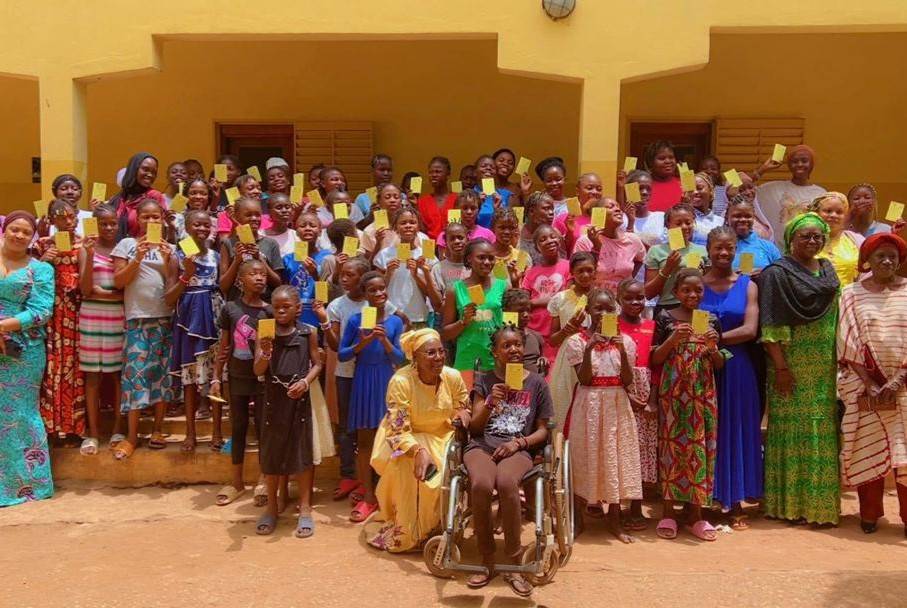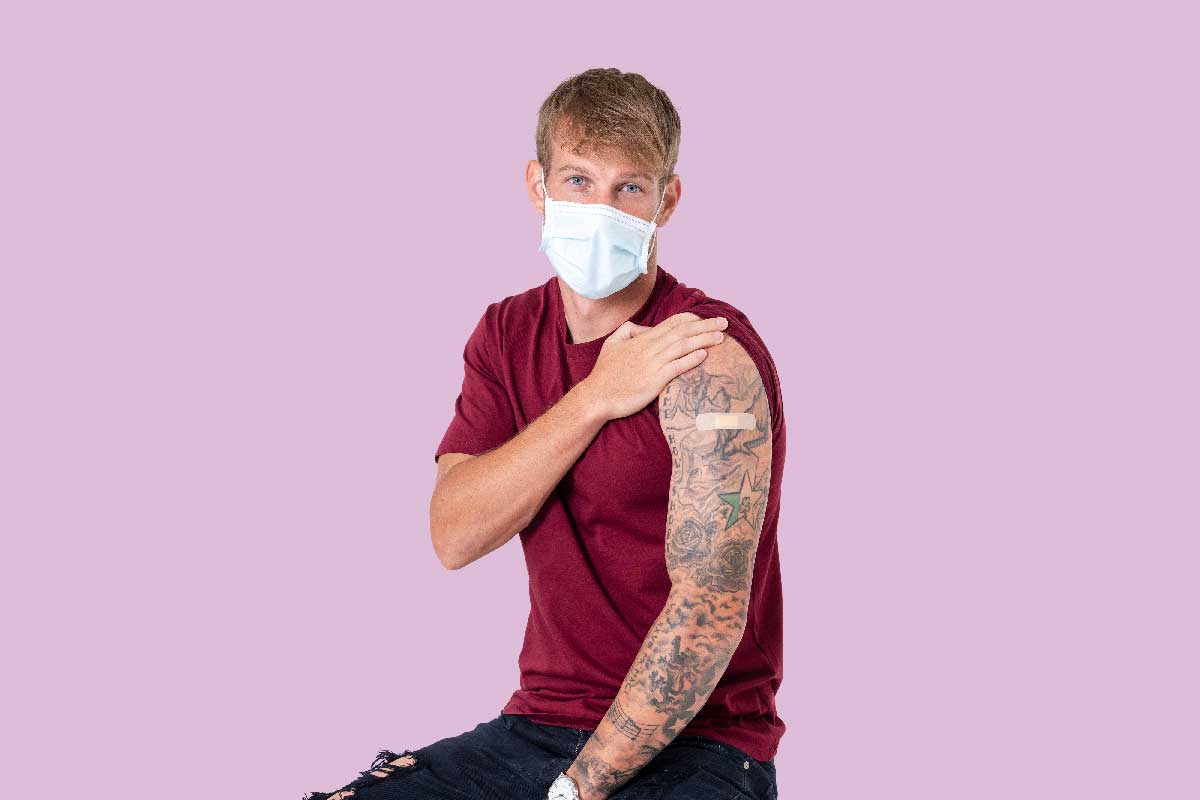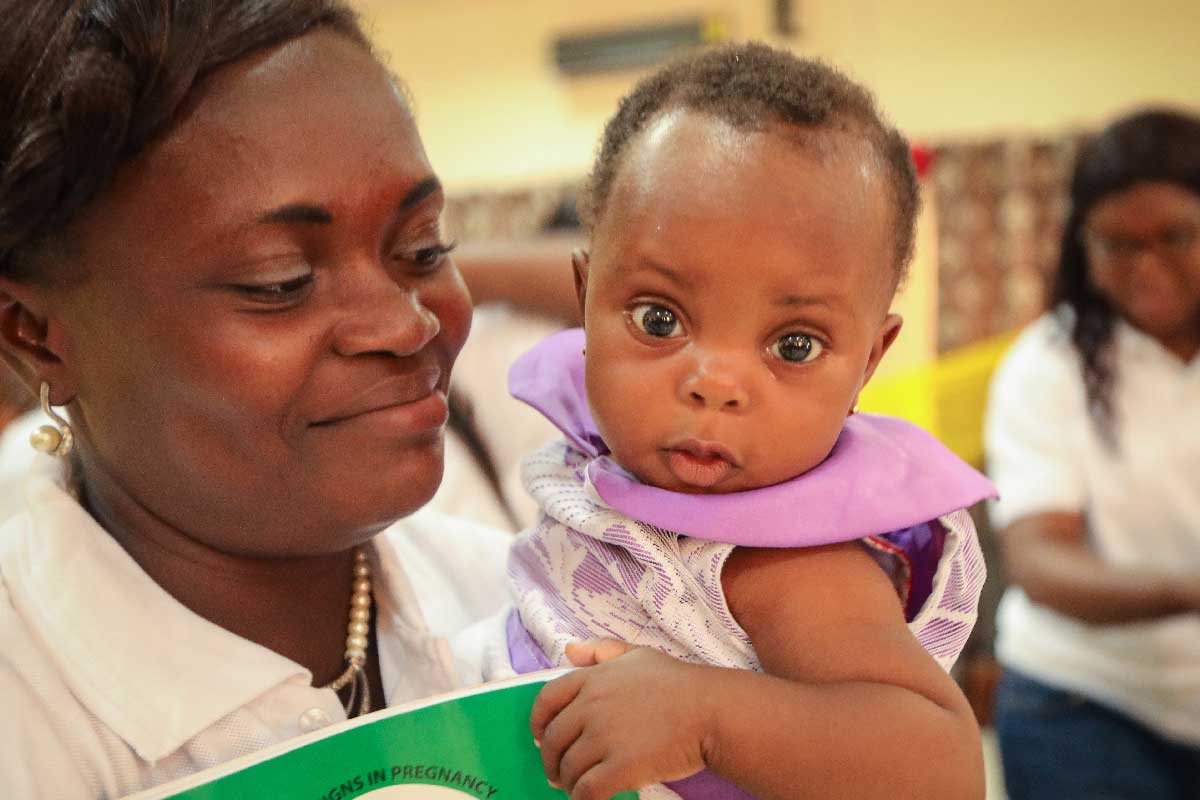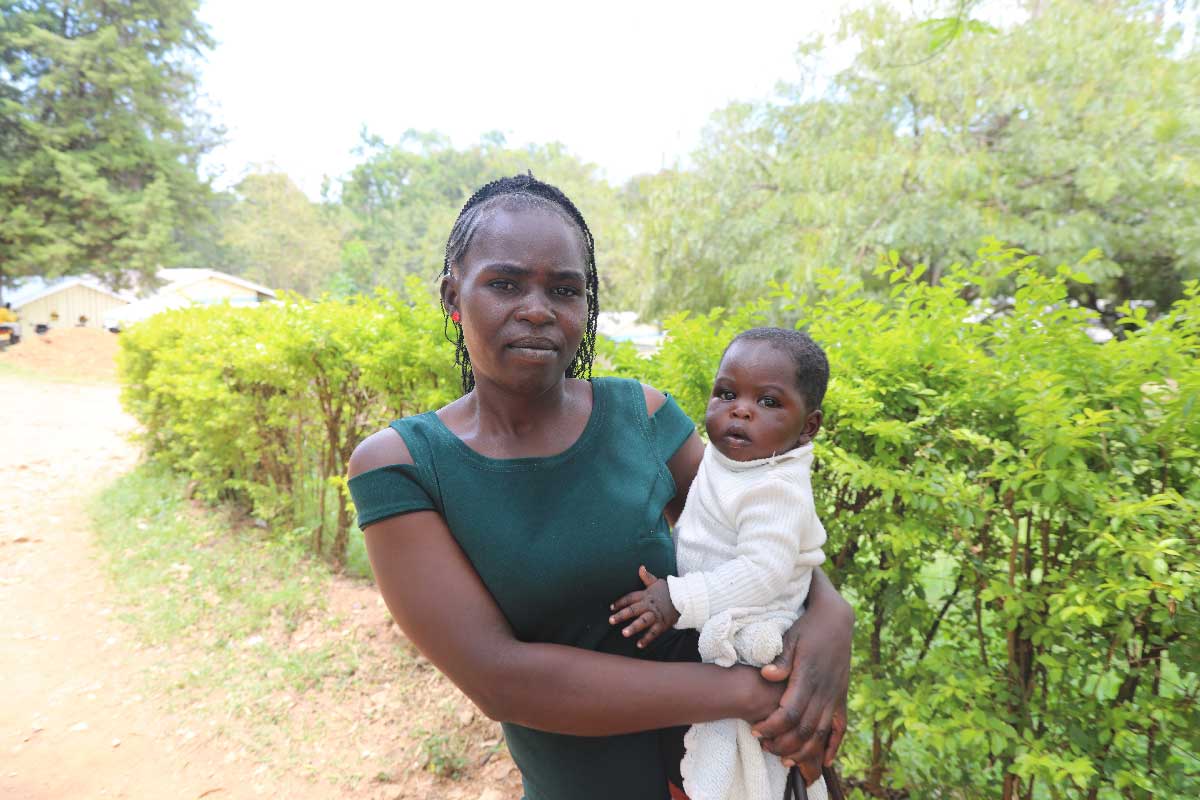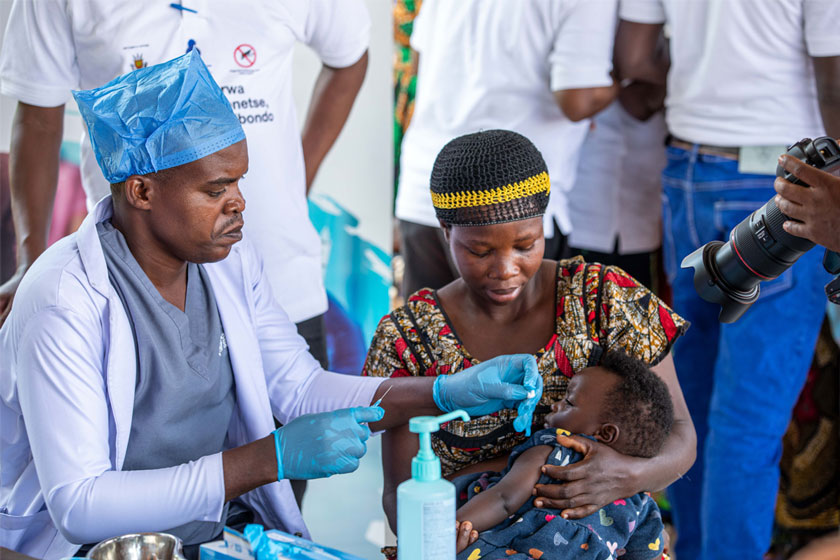Despite a wave of misinformation, Pakistan’s HPV introduction campaign covers ground
The online rumour-mill sowed doubts among Pakistani parents, but an energetic effort to build trust paid off, with more than 9 million girls now protected from cervical cancer.
- 8 October 2025
- 6 min read
- by Adeel Saeed
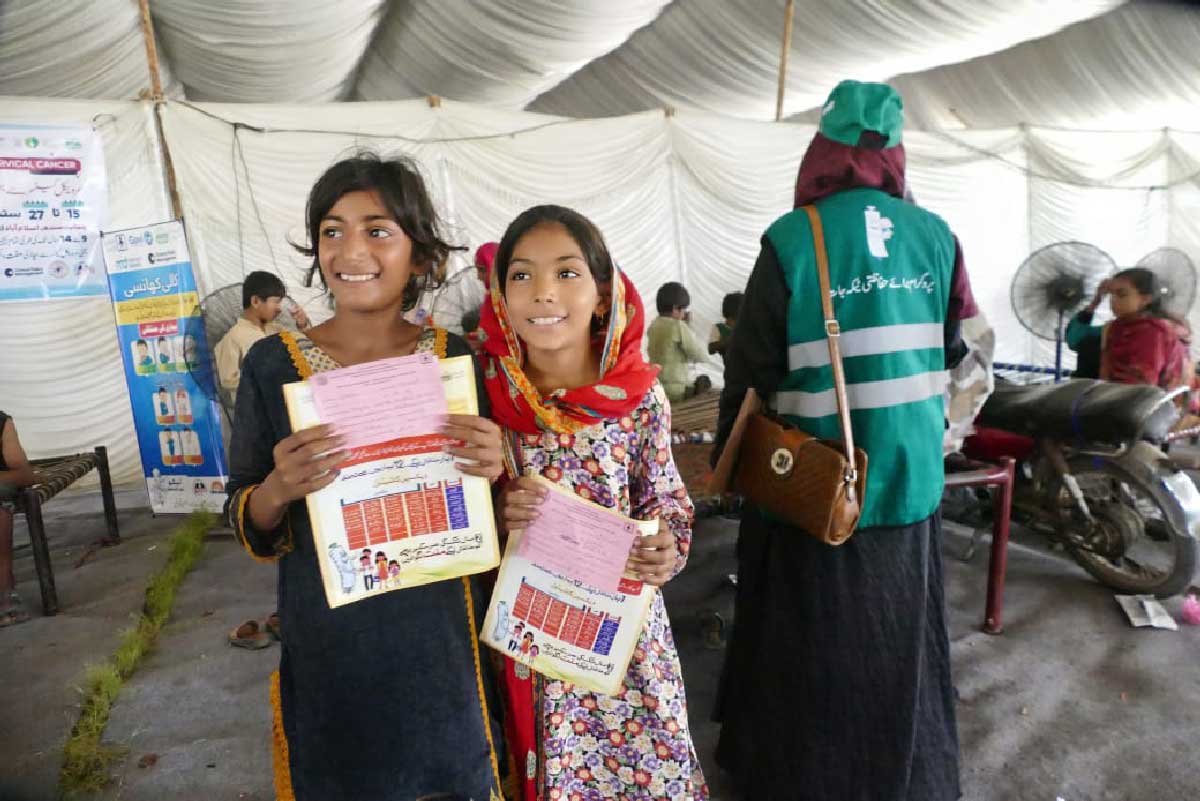
On the doorstep of her modest home in Rawalpindi town, Amina adjusted her scarf to cover her hair and told the visiting health workers she was not quite ready to allow her adolescent daughter to be vaccinated against the human papillomavirus (HPV).
She had listened to the information they had to offer. She had heard that the virus is responsible for the overwhelming majority of cases of cervical cancer, and learned that vaccine, which began to roll out in Pakistan for the first time on 15 September, has been shown capable of blocking 90% of cases of the cancer. But she was unsure; she wanted more time. She wanted to speak to her husband before she decided.
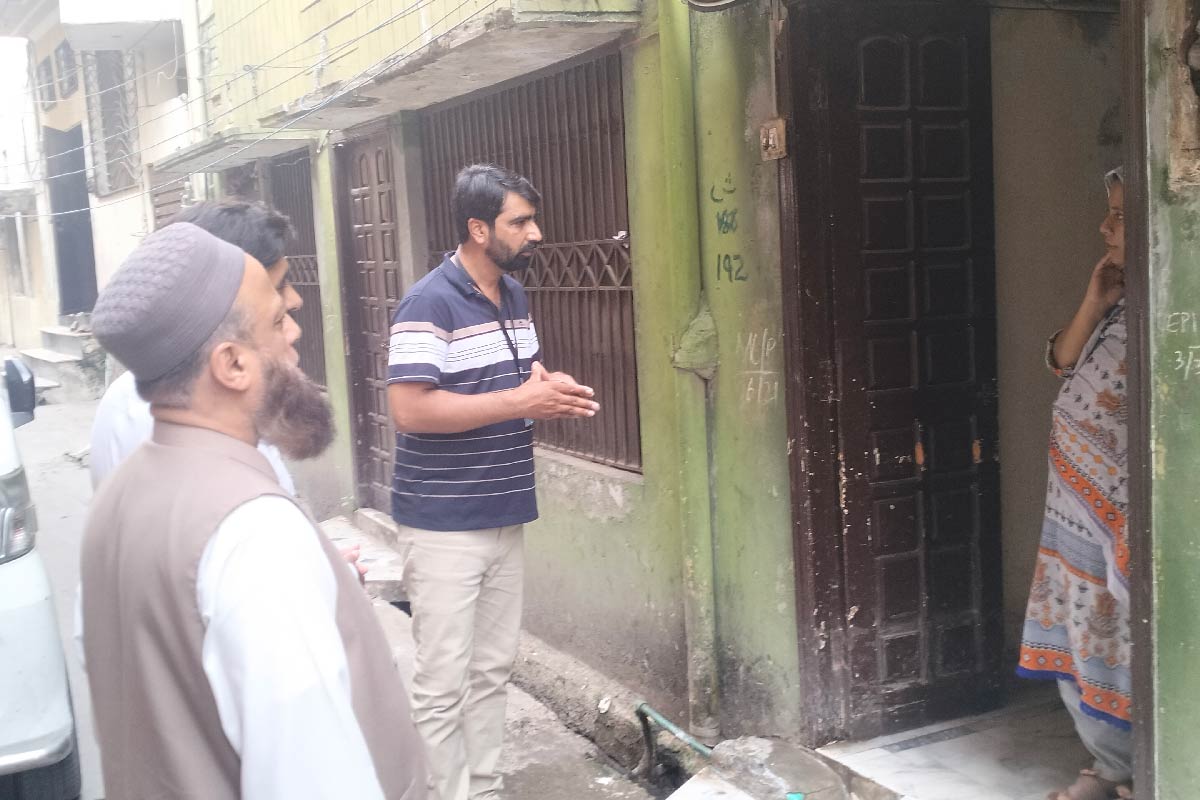
A couple of days later, the health team returned to address both parents’ questions and concerns. Furnished with clear responses, the parents agreed to let their daughter be vaccinated.
“A similar response of shift from confusion to acceptance was observed among almost 90% of parents of our target adolescent girls,” reported Maskeen Ullah, In-charge at the Health Centre in Rawalpindi’s Union Council Imam Bargah. Maskeen saw coverage ramp up from 10% of the target on day one of the campaign to more than 70% on the third day.
Parents raise concern
Pakistan’s first 12-day introductory campaign, which ran from 15–27 September, aimed to reach 13 million adolescent girls aged 9 to 14 across Punjab, Sindh, Azad Jammu and Kashmir (AJK) region, and Islamabad. A second and third are due to kick off in 2026 and 2027, bringing protection to 5 million more girls in other parts of the country.
Bringing the HPV vaccine into the national routine immunisation schedule was always going to be a challenge, and not just because of the scale of the eligible population. Although cervical cancer is the third-most common cancer among Pakistani women, killing a reported 3,500 each year – a probable underestimation of the true burden – a recent Jhpiego survey found that only 19% of caregivers had ever even heard of the disease. Just 2% knew that a vaccine capable of preventing it existed.
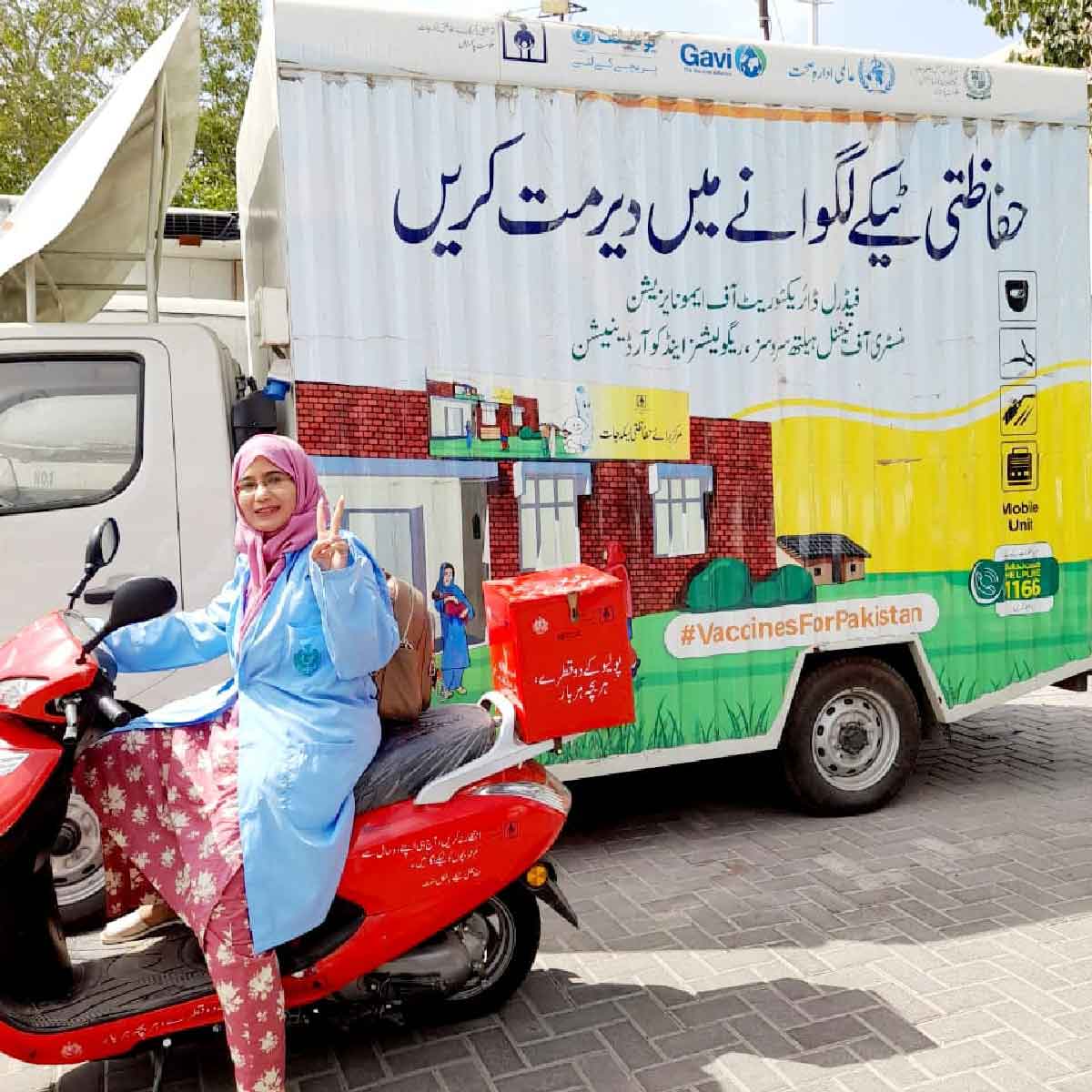
Unfamiliarity engendered worry. “Parental hesitancy towards HPV vaccine was anticipated, as myths and misinformation went viral on social media even before launching of the immunisation campaign, creating widespread fear and confusion among people,” said Dr Muzafar Saeed, Programme Lead for the Rural Education and Economic Development Society (REEDS) on HPV.
REEDS, in collaboration with Federal Directorate of Immunization, Expanded Programme for Immunization (EPI) and Gavi, brought HPV vaccination to eight districts of Punjab province.
“Why only girls?”, “Will it cause infertility?”, “Is it halal?” and even, “Why it is free of cost?” were some of the questions health workers heard repeatedly from parents, who had been caught in the crossfire of a misinformation blitz on social media.
Patience makes progress
Building confidence in the unfamiliar immunisation has demanded a patient investment of time, Muzafar explained. Social mobilisers and Community Engagement Specialists made “regular visits” to hesitant parents. A majority of the initially wary in his catchment area have since given consent, Dr Saeed said.
Campaign close-up: Farkhunda Feroz, vaccinator
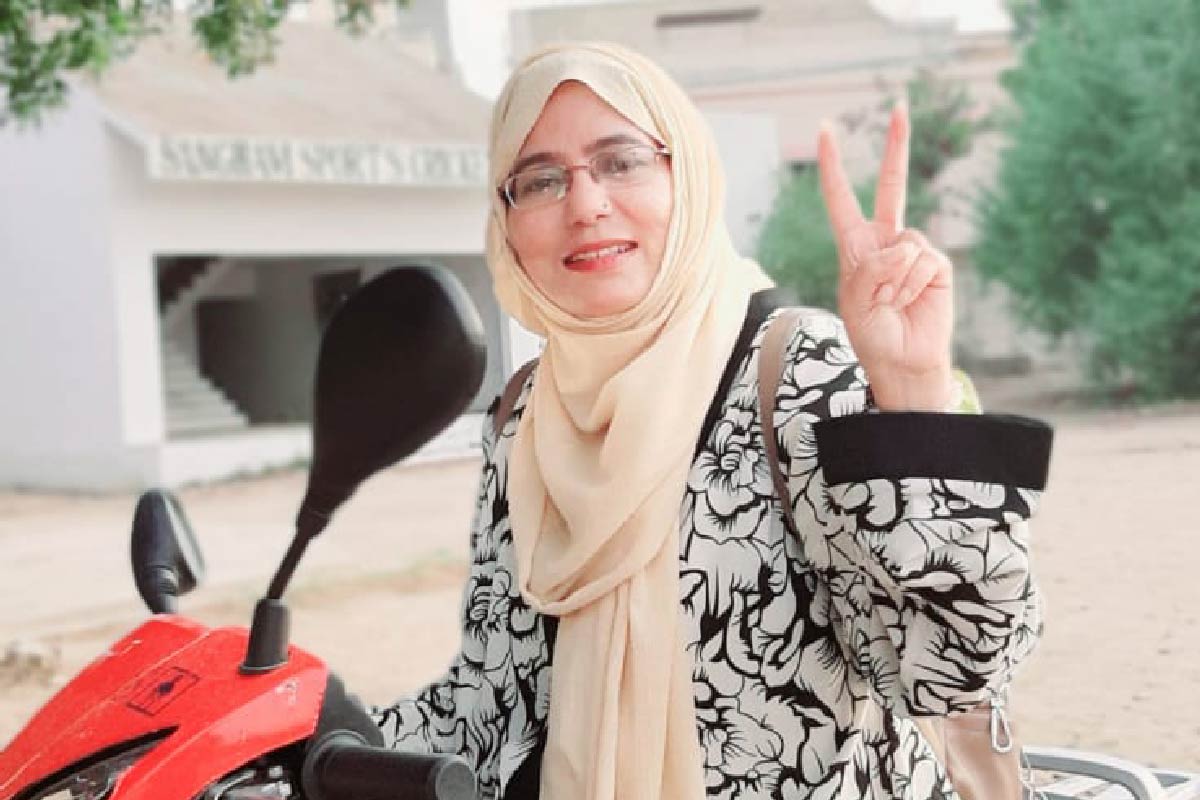
“Building trust through dialogue is essential, and for this purpose we are visiting home to home and different communities for vaccination against HPV,” said Farkhunda Feroz, a female vaccinator with EPI Sindh, astride one of the many electric scooters provided to Karachi frontliners by Gavi.
Getting around the densely-populated city quickly is a non-trivial concern in a large-scale campaign like this one – especially when a climate of anxiety means follow-up visits are vital.
“At first visit, parents are often reluctant, due to negative videos,” Feroz explained. “But after follow-up discussions, many change their minds.” One school Karachi’s Balouch Got area went from alarmingly poor turnout to nearly 100% coverage after consistent community engagement, she reported.
Similar experiences were reported from Sindh, where 3,611 teams worked to reach 4.1 million girls – including 2.2 million girls who were not in school. “As per statistics, vaccination coverage in Sindh province recorded above 50% on the fourth day of the campaign and is improving due to continuous follow up visits and counter propaganda measures,” shared Dr Arsalan Mamon, Monitoring and Evaluation Officer EPI Sindh.
Dr Mamon said the health officials had been expecting 80% coverage in Sindh, but the pace was impeded by “misleading video messages”.
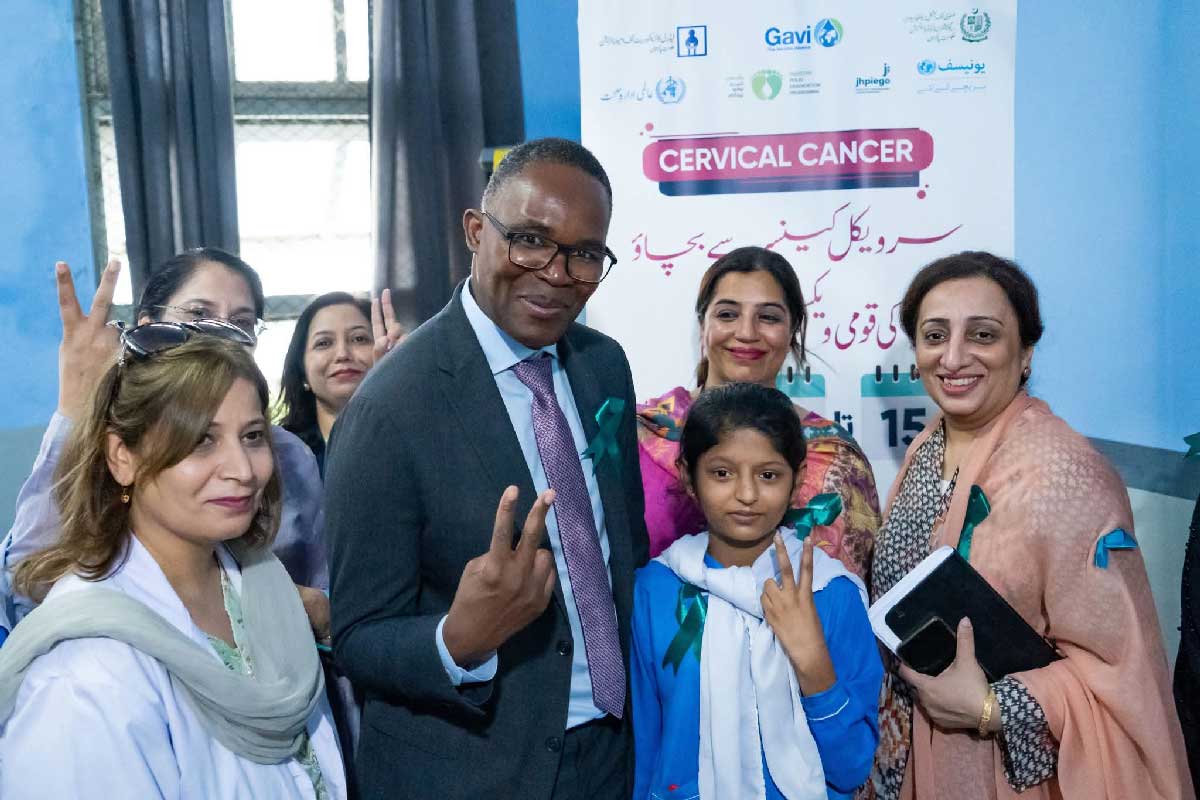
Countering misinformation
Even before the campaign kicked off, it had been clear to officials like Dr Mamon that those “misleading video messages” circulating on social media were liable to seriously hobble uptake. “The Health Ministry launched a counter-strategy of releasing awareness videos featuring gynaecologists, celebrities, politicians, religious scholars, media persons,” says Dr Azra Ahsan, President of AMAN (Association for Mothers & Newborns), a civil society organisation working on community awareness of HPV.
Some anti-vaccine voices were directly approached by Health Department officials, who sought to furnish them with evidence of the life-saving potential of the HPV vaccine.
Noted religious scholars also released video messages assuring the country’s men that the HPV vaccine is not harmful for young girls, and urged parents not to pay heed to the misleading information being spread on social media.
Campaign close-up: Rija Kamal, HPV-vaccinated, and Syed Mustafa Kamal, Pakistan Health Minister
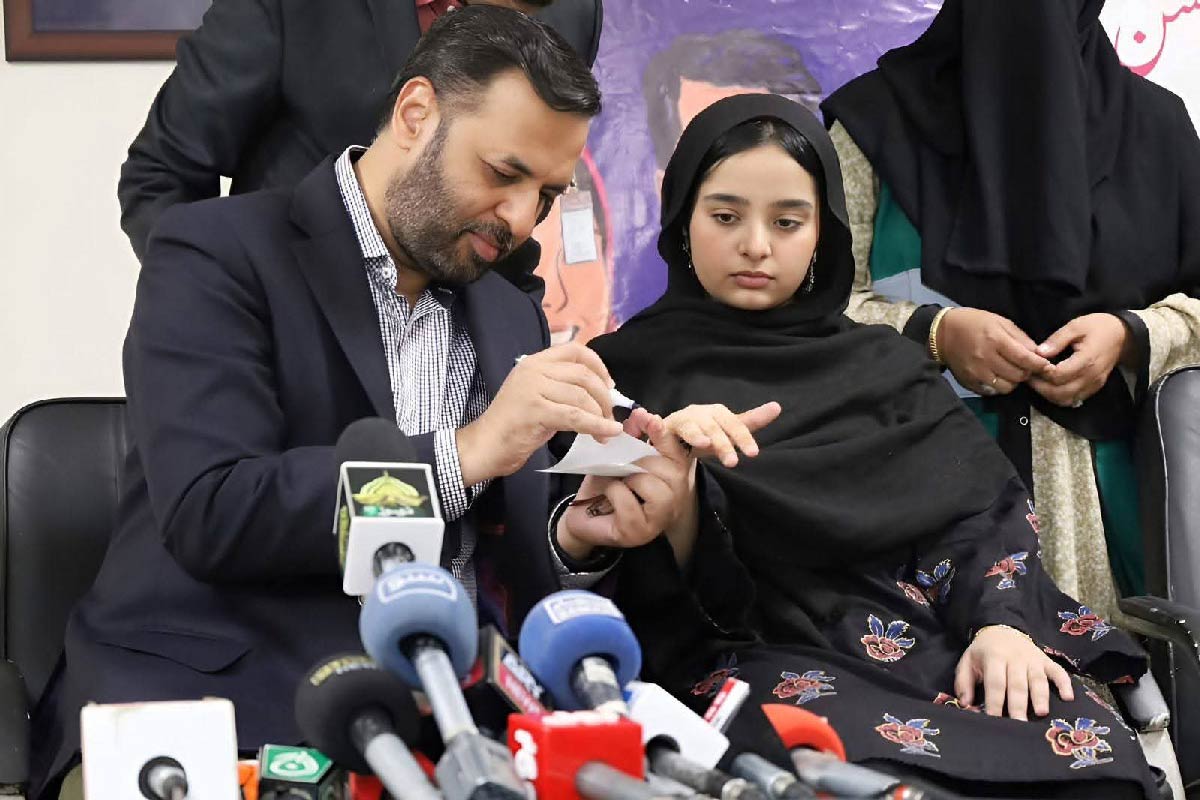
On 20 September, Rija Kamal got up before a crowd of gathered reporters to receive her vaccine.
Her father, Federal Minister for National Health Services Syed Mustafa Kamal, sat at her side. “To ensure that every girl in our country has not been left behind from receiving the HPV vaccine due to misleading propaganda, I have decided to have my daughter vaccinated publicly,” he told the press.
“This step aims to break harmful rumours about the HPV vaccine and inspire parents, especially those misled by propaganda, to take action and protect their daughters from cervical cancer through timely vaccination,” Mustafa told newsmen.
That one shot would protect more girls than just Rija from the cancer-causing virus. On 26 September, the Health Minister reported that her public immunisation had “a huge impact”.
“From the fifth day of the campaign, refusal rates began dropping, and acceptance climbed to 70–80% in some districts,” he added.
Have you read?
Well known singer and education activist Shezad Roy also joined the campaign. Speaking at a school in Karachi, he urged parents not to fall for rumours on social media and instead, to trust the proven benefits of HPV vaccination in protecting their daughters.
In hopes that the hard-won momentum would continue to hold, the government extended the vaccination campaign by three additional days. By the campaign’s closing date, the Health Minister was able to report that it had, “overcome early setbacks fuelled by sceptics online, and so far achieved [over] 70% of its goal at national level.”
Campaign check-in: the view from October
- After the three-day extension to the campaign (29 September to 1 October), overall coverage among the eligible cohort of 9- to 14-year-old girls had reached 71%, according to government data.
- That’s 9.2 million girls vaccinated – 9.2 million girls protected against cervical cancer – in 15 days.
- Momentum matters: the three-day extension to the campaign contributed 1.4 million more vaccinations. Punjab coverage rates in particular rose steeply during the catch-up days.
- There’s further to go. 18 districts report coverage rates below 60%. Alongside continued vaccination via clinics, schools and outreach activities, the government has recommended “intensified follow-up” for low-coverage zones.
